The Buddha of Langza
We visited Langza many years ago. But it feels like yesterday. Even though a long time has elapsed, I can clearly see the Buddha of Langza, sitting cross legged, watching over one of the most amazing villages of the world.

I vividly remember that bright sunny day, that surreal landscape, a continuous draft of crisp cold wind and that statue, sitting alone, blessing the valley below and the skies above. A villager told us that when Dalai Lama visited Langza, he said that if there is one place where he would like to settle down as an ordinary Tibetan, it would be nowhere else but Langza. I do not know how true that story is, but what was supposedly said about Langza by Dalai Lama is not untrue. Even Gods would like to settle down in this heaven.
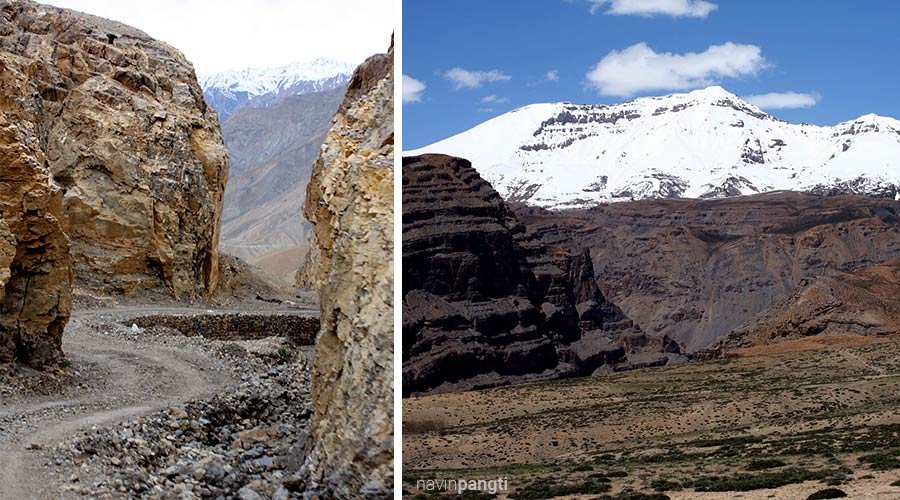
The 16 Kms road trip from the town of Kaza, headquarters of Lahual and Spiti, to Langza is full of surprises. The climb of around 2500 feet is rapid, as is the change in landscape. The journey starts with a seemingly rough terrain followed by a mystical landscape of well-rounded hills, showing off their unique colours as they dance with the sun in the backdrop of snow peaked mountains.

I was intrigued by the colour the soil. I was wondering what creates those hues. Then, almost all of sudden, I saw that huge golden coloured statute of Buddha, standing tall amid these gigantic hills. The moment I saw him, I felt that he was intently watching us come. I felt that he is blessings us all. I also felt that he was rather lonely.

We were still a kilometre away so I wanted to drive faster so that I can be with him as soon as possible. I was eager to witness him from close quarters. I was eager to see the valley from his point of view. I wanted to experience his love for this land and imagine the ways in which he blesses it.


Once there, standing right in front of the Buddha of Langza, one felt pretty insignificant. It was not about this huge colourful statue sitting there for a thousand years. It was also not about the magnanimity of nature in this nowhere sort of land. The place, in its entirety, was talking about our ephemeral existence. A strange feeling engulfed me even as the cold incessant wind was almost piercing through our clothes. That sharp chill was uncomfortable for the body but seemed to be refreshing our souls.

The Buddha of Langza sits next to Lang, also known as Langza Gompa, the ancient village temple. Locals believe that all the deities of Spiti Valley reside here, thus making Langza the spiritual centre of the valley. The monk at Langza Gompa told us that the statue is almost 1000 years old. I could not avoid wondering about those souls who put in hard labour, perhaps over years, to create the image of their God is this unique landscape.
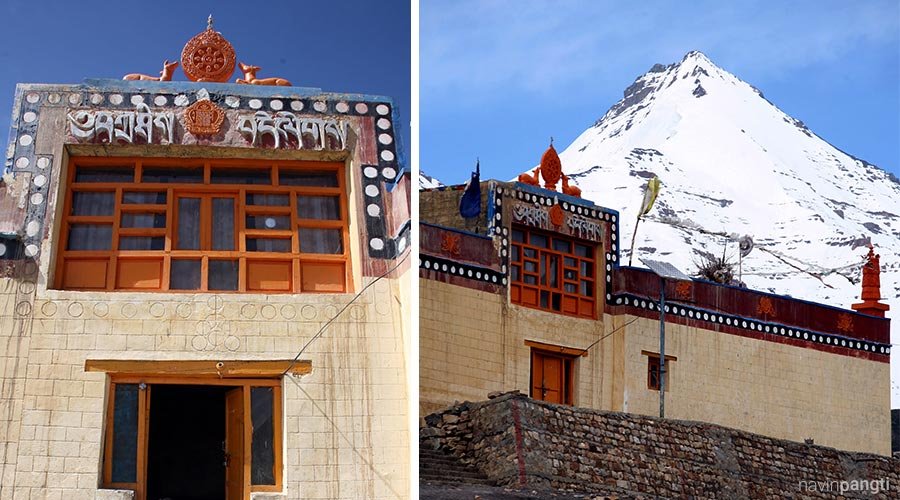
Langza village, at an altitude of 14550 feet, is one of the highest motorable villages of India. The symmetrical mud brick houses of Langza are built is distinct Tibetan style. The mud brick structure helps insulates the interiors from extreme weather, as the village is literally buried in snow throughout the long winters with the temperature dropping to over minus 20 degrees. Even in the peak of summers, when the sun is harsh, there is chill in the air and the nights are cold.

We were keen to visit the houses and meetup with the locals but the kids started showing symptoms of mountain sickness so we had to limit our movements and hasten our stay. From what I learnt from the locals, these houses typically have a large kitchen which also serves as the living room. A centrally placed wood fired stove (bukhari) is used to cook food and keep the interiors warm. Most of these houses have dry toilets.

It is believed that the village got its name from ‘Lang’ which means the village temple. Some people believe that the term Langza is derived from ‘La’ which means a mountain pass and ‘Za’ which is derived from Zama pottery, which traditionally was the main occupation of Langza residents.
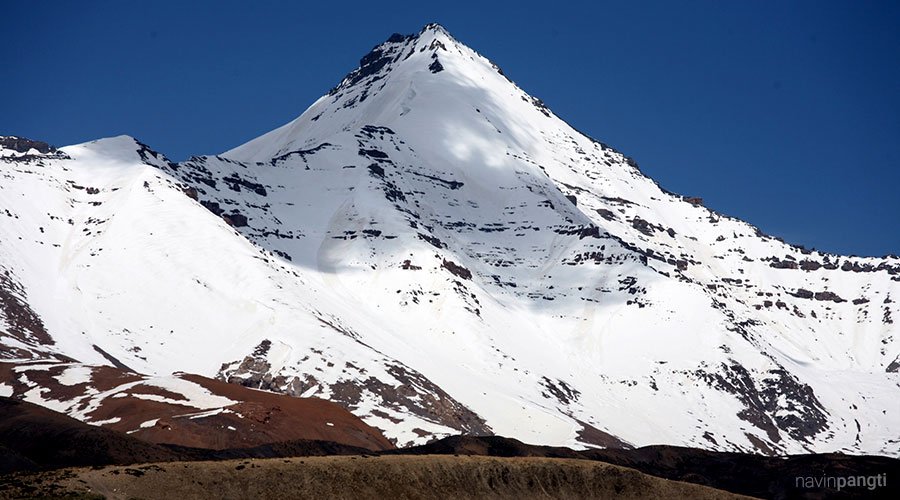
Apart from Buddha, Langza is also blessed by the majestic Chau Chau Kang Nilda peak, one of the tallest peaks in the region. Its blessings flow in as streams which irrigate the fields of Langza village. To witness such lush green fields in this terrain was almost magical. Almost like oasis in the desert.
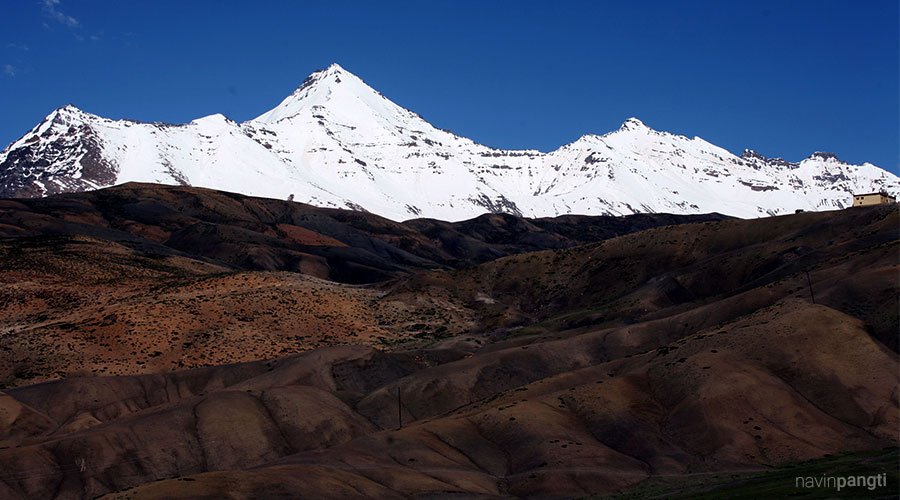
The hills in the foreground of Chau Chau Kang Nilda peak are sparsely covered with grass and shrubs. A local resident told me that it was a reserved forest. I gasped and was almost going to laugh out aloud. I had never imagined a reserved forest like this. Later, when I researched about, I was surprised to find that this reserved forest is home to snow leopard, Himalayan wolf, red fox and Ibex.

Langza is also well known for its fossils which are found in abundance here. Millions of years ago, all this land was submerged under the ocean. The fossils of marine life, found abundantly at Langza, literally forces us to visualise an era when the tectonic plates clashed, giving birth these majestic mountains. Finding evidence of marine life, so high up and so far from the sea is one of the most ironical experiences of my life. The commonly found fossils are the spiral shaped fossils which date back to the late Jurassic period. No wonder Langza is also known as the fossil village of Spiti valley.

As I write and share this article, the wondrous Spiti valley must be covered with snow. I remember asking a Kaza resident about how they dealt with the harsh winters. He told me that winters is the time to eat, drink and make merry. The only work is to clear up the piled up snow and take care of the domestic animals. Once the snow melts and the valley is ready to embrace the visitors, one can access this divine land through Kunzum pass (Lahaul) or through the Kinnaur valley.

I end this note with a hope that life will give me another chance to visit the serene valley and this surreal hamlet. I look forward to meeting the Budhha of Langza once again!
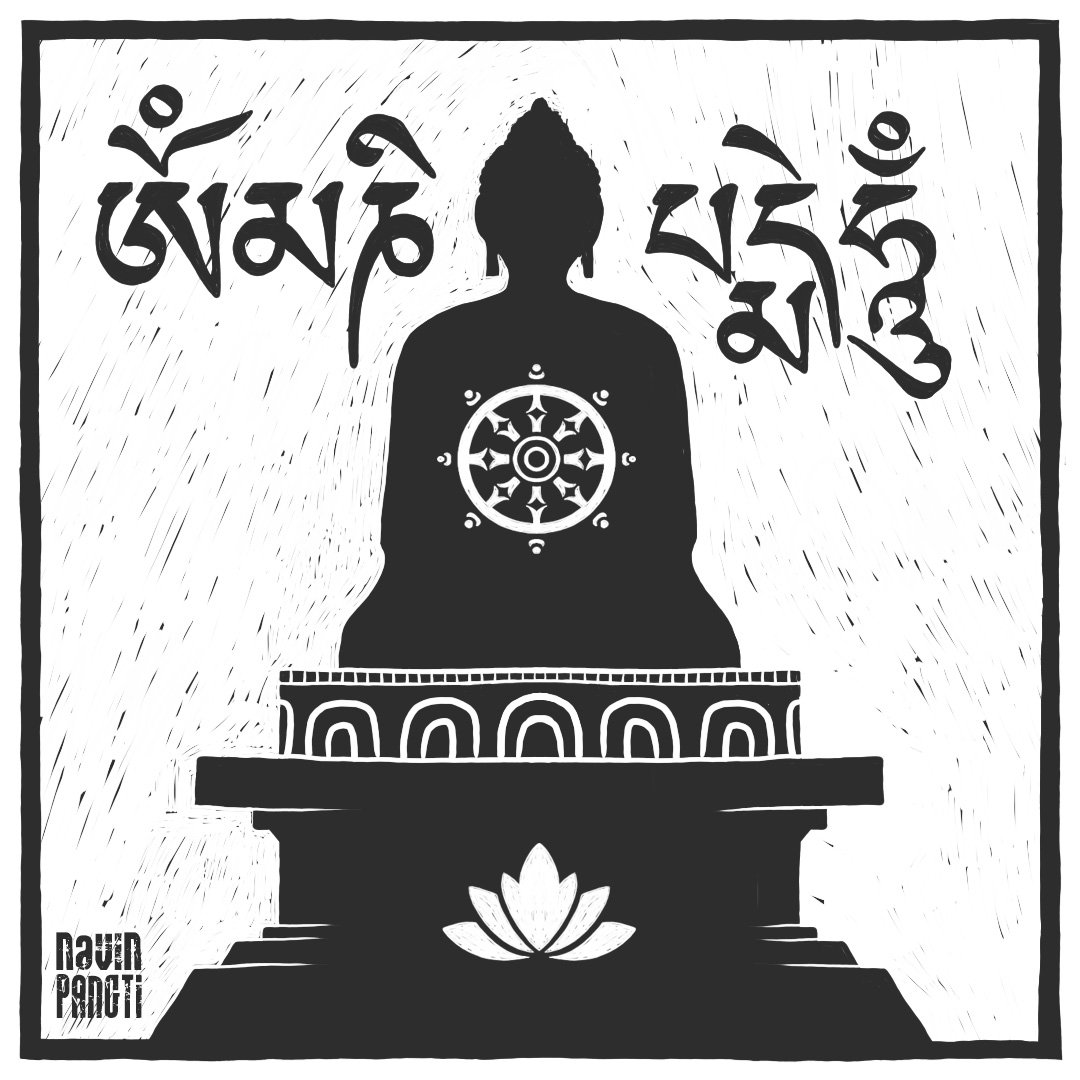













3 Responses
[…] Langza and the Buddha Statue – A high-altitude village with a giant seated Buddha overlooking the valley. The surrounding hills, fossil-rich soil, and dramatic skies make Langza ideal for wide landscape and cultural imagery. […]
[…] Langza Village and Buddha Statue – High above the valley floor, this peaceful village is dominated by a massive seated Buddha statue facing the mountains. The dramatic backdrop and fossil-rich hills offer wide landscape potential and environmental portraits. […]
[…] Langza Village and Buddha Statue – High above the valley, Langza’s massive seated Buddha faces the mountains and the Spiti sky. The fossil-rich terrain and sparse settlements create open, surreal compositions. During sunrise, the statue glows with a warm hue, offering peaceful and symbolic framing possibilities. […]